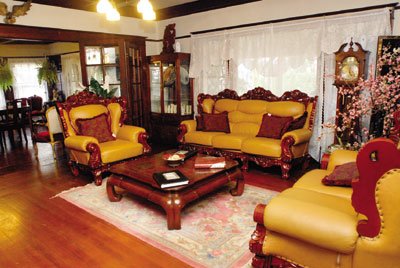About 1 in every 15 homes in Gilroy is in some stage of
foreclosure, according to an online realty service that monitors
local data.
By Chris Bone and Nicole Baldocchi
GILROY
About 1 in every 15 homes in Gilroy is in some stage of foreclosure, according to an online realty service that monitors local data.
In Gilroy, from January through October – the latest month for which data is available – 823 homes entered into foreclosures, according to Serdar Bankaci, president and CEO of Default Research, a data firm that tracks real estate trends. This number includes notices of default – the first step in the foreclosure process – auctions and bank-owned properties. During the same period last year, there were 260 foreclosures. That equals an increase of about 215 percent.
From January through October, 325 homes entered into foreclosures in Morgan Hill. During the same period last year, there were 149 foreclosures. That amounts to a 118-percent increase.
In October alone, 44 Gilroy homes slipped into foreclosure, but that was actually down from 55 the month before, according Bankaci’s data. His research outfit also reported this month that northern California foreclosures dropped nearly 17 percent in October 2008 from the same time last year, most likely due to Senate Bill 1137, which legislators passed in September. The bill requires lenders, in most cases, to wait 30 days before filing a notice of default and only after they attempt to talk with the indebted homeowners.
Still, a foreclosure usually takes about four to six months to sell, so those 44 homes are just a small portion of the 823 in some stage of foreclosure. This affects neighbors who often have to put up with dilapidation and unkempt yards next door, and police have reported that abandoned properties attract thieves and drug users.
In Morgan Hill, 13 homes fell into foreclosure in October, down from 19 in September. But again, that’s just a sliver of the 325 homes that have notices of default against them, are set to go to auction or are owned by banks.
Caught in this wave of foreclosures was Gilroyan Isabel Velasco, 52, who agreed to purchase a home in 2005 for $642,000 with a $4,000-per-month mortgage payment. At the time, Velasco said the household of five adults earned about $4,000 a month.
“In two years, the (real estate agent) said the house would increase in value and we would have monetary gains,” Velasco said through a translator, adding that she thought the payments would eventually decrease. When she called the agent later on to refinance, though, she was told that she could not refinance because all the houses in the area had depreciated in value.
“We took everything we had to make those payments and we had no more money,” Velasco said. “I felt bad because now we can’t even find a place to rent.”
Also in Gilroy, the Reza family bought a $740,000 home in 2005 with a monthly mortgage payment of about $4,100 to start. The household brought in about $1,200 a month – or about $14,400 a year. Ernesto Reza, 41, said the real estate agent told him she would write on the application that his wife, Paula Reza, had a supervisory position that earned about $4,800 per month so that the lender would approve their loan.
Ernesto Reza also said the real estate agent offered him $20,000 to sign for a house for her friend who was not qualified. Within a year, the agent said her friend would refinance and Ernesto Reza would make money off the arrangement. He did not accept this offer, however.
“The truth is she didn’t explain the contract well. I was very concerned about (the money we were bringing in),” said Paula Reza, adding that the agent told her “there wouldn’t be a problem” and “it would all be OK.”
The Rezas are living in an apartment now and have filed a claim against the agent, but they said it is hard to cope with having a house one minute and then not another.
“I was very depressed and stressed because we didn’t have enough money,” said Paula Reza. “This has affected everyone. When we left the house, all the kids cried.”
Gretchen Merrick, Realtor at Intero Real Estate, said it is clear the Rezas fell victim to predatory lending because the person who gave them the loan took advantage of them. There was never a chance they could meet their payments for a whole year, Merrick said.
“That just hurts my stomach to hear that,” Merrick said. “It’s unethical and immoral how these people were taken advantage of. And there probably needs to be more regulation.”
Merrick also said she has noticed a “dramatic increase in the number of foreclosures” in South County, adding that the majority of those are in Gilroy.
Buyers have turned to inland areas such as Gilroy with high foreclosures and depreciation rates, and within the wider Bay Area, homes sales in October occurred at their fastest in 17 months, according to DataQuick, which monitors real estate activity nationwide. The research firm reported that all the foreclosures mean the median sale price for the Bay Area fell a record 40.6 percent, or $256,000, from a year ago.
“This is the first year of my eight-year career that I’ve written many offers for many clients on short sales and foreclosed properties,” Merrick said.
Gem succumbs to foreclosure after tough times
While the foreclosure of her home-cum-business is not directly tied to the subprime loan crisis, Octavia Butler’s Bohemian experiment came to an end Thursday when the bank sold her old Craftsman-Victorian abode.
The formidable woman with a smoky voice and affectionate mannerisms bought the solid, 3,500-square-foot house in east Gilroy seven years ago for about $500,000. She has since spent her life savings turning it into the Kemetic Institute Cultural Center and Museum: a place for groups to hold conferences, couples to wed, children to learn and idealists to converse.
But when she lost her job with the IRS last year after three decades with the agency, the income from her second job in security could not cover her monthly mortgage payments of $5,000. Networking with the city’s artsy crowd never came easy, she said, and neither did grants. Still, she spent about $200,000 on decorations, furniture, renovations, artwork and appliances, but word of the former hippie’s cultural enclave never seemed to spread. Before she knew it, Butler owed the bank about $670,000.
“I was just spinning my wheels this whole time,” she said in between sobs Tuesday, bemoaning missed and late connections with key community members and the difficulty of milking those connections in the current economic climate.
“I met the right people just a little too late, and now I’m going to be homeless,” Butler said seated in her art gallery, where long wooden African masks, miniature elephants, porcelain dolls, rain sticks, old oil lamps and a collage of multi-colored trinkets crowded glass shelves. “Santa Baby” played on the radio as Butler spoke, and the smell of antiques imbued the air, giving a sense of time to the portraits of Native Americans galloping atop horses, old black men playing poker and young children frolicking. The kaleidoscope of faces covered the walls, looking over empty chairs draped in red fabric.
Upstairs, the ornate “French” bedroom remained empty, too, as did the bathroom fit for a 1950s movie star. In the cold, quiet living room downstairs, two toddler-sized dolls sat on the bench in front of the baby grand piano. No one cooked in the kitchen, and outside beneath the tangerine tree, nobody tilled the square of land Butler said she had hoped to cultivate one day.
After all her effort, the place to be inspired had failed to inspire. Still, the oldest of 11 siblings and the daughter of a Pentecostal minister who took his family all over the country said she has not given up on her mission to make the world a better place, even though her board of directors has.
“The sad part of all this is that someone could still actually do this, and until people actually came here, they could never understand what I was doing, and then it was like, ‘Wow!'” Butler said. “But I never had any repeat customers.”
To move all her fragile possessions will cost about $7,000, but Butler said she has not found affordable storage space yet and hopes someone will come forward to help her.
“Everyone tells me I should sell everything, but if I’m going to be homeless, when I come back up, I don’t want to have to buy all these things again. Some of it’s irreplaceable,” Butler said as she gazed across her backyard with Tom Maisenbach, her property manager.
She does plan on selling two bedroom sets and the new refrigerator and freezer she bought, along with some wicker furniture. She also plans to lend some of her artwork to an African-American history museum in San Jose. After that, she plans on going back to school and then using her IRS experience to begin a career in investigations.
“I’m not bitter or blaming this on anyone. Life is what it is – the yin and the yang,” Butler said. “Next time it’ll be better.”














